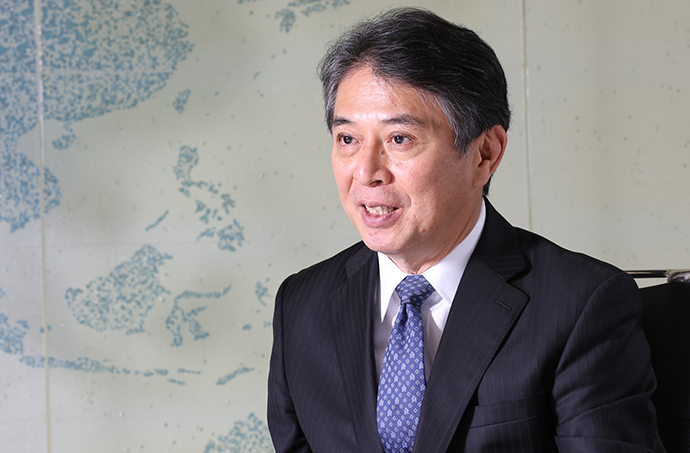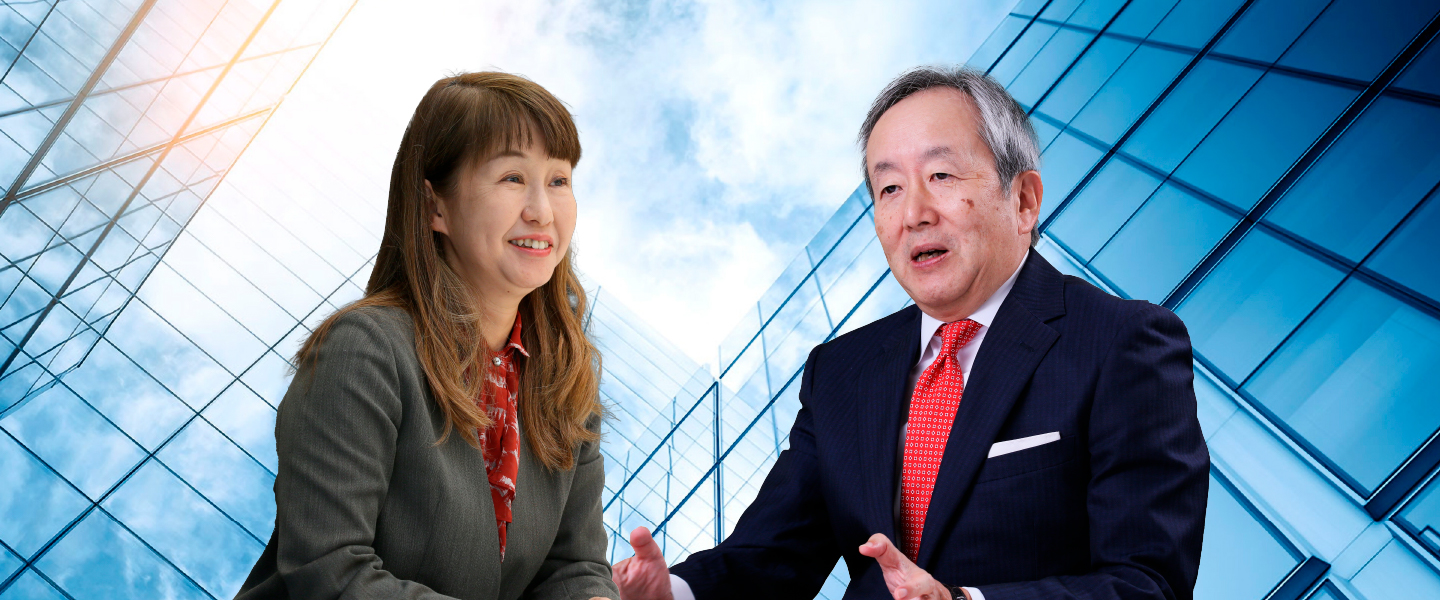
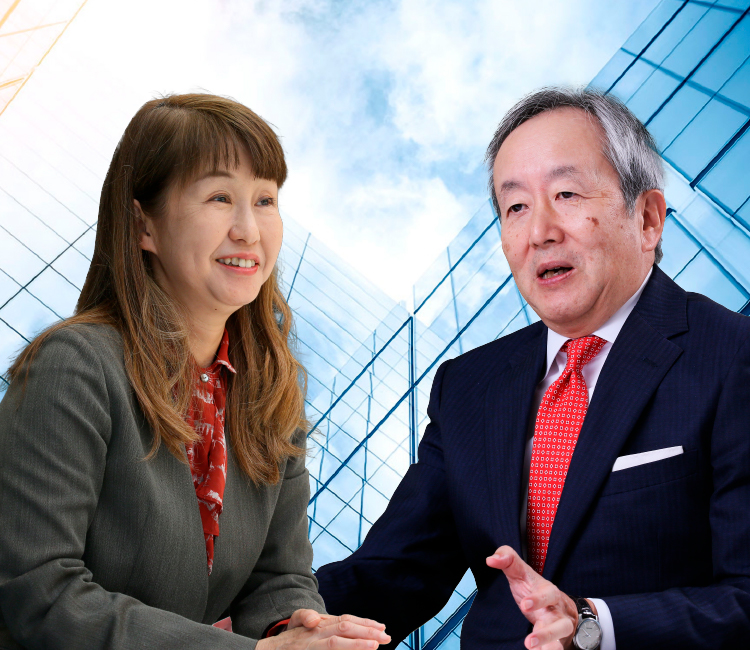
Tackling global challenges with flexible management of human capital and a focus on social value
- #Sustainability
- #Management Strategies
- #Spirit
What is the value of a company today? This refers not only to its economic value, but also its focus on social value. Consumers and investors are particularly interested in human capital management and environmental measures. Given this, AGC has expanded its business portfolio through numerous mergers & acquisitions (M&A). The company strongly promotes globalization. The company’s utilization of human resources in Japan and overseas, investment in strategic businesses, M&A strategies, and carbon neutral initiatives reveal a philosophy that many companies should follow. Nagako Kobayashi, of the Nikkei BP Intelligence Group, who is familiar with ESG investment and human capital management, interviewed AGC Inc. Representative Director, Executive Vice-President, and CFO Shinji Miyaji.
Profile
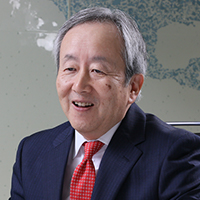
Shinji Miyaji
Representative Director and Senior Executive Vice President AGC Inc.
Born in Kochi Prefecture, he graduated with a mechanical engineering degree from Sophia University. He graduated from Harvard Business School AMP in 2011. After working as an IT engineer at a precision equipment manufacturer, he joined Asahi Glass (now AGC Inc.). After working in the systems department, he was assigned to corporate planning, where he was tasked with forming the AGC Group’s vision and medium-term management plan, introducing the in-house company management structure, and overseeing governance reform. After gaining experience in diverse roles -- including president of a Japan-based subsidiary, head of the New Business Department, head of the Corporate Planning Department, president of a U.S. affiliated company, and head of the Electronic Materials Department -- he was appointed CFO in January 2016. As of November 2021, he is active at the core of global management as the representative director, senior executive vice president, CFO, CCO and general manager of corporate planning Headquarters.
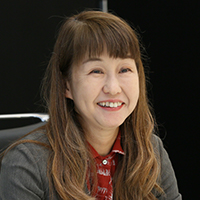
Nagako Kobayashi
Nikkei BP Intelligence Group Chief Researcher and Publisher of Human Capital Online
Kobayashi Human capital management is represented by the “S” in ESG, the social aspect. What kind of human resources strategy does AGC have for the future?
Miyaji Our founder Toshiya Iwasaki said, “A heart that trusts people, moves people.” Since its founding, our company has maintained a culture of valuing people. I believe that investing in people is the most efficient strategy. The reason is simple: Materials manufacturers such as ours invest heavily in equipment and operations, but all decisions are made by people. People are the driving force of a company, and without good people, a company cannot grow.
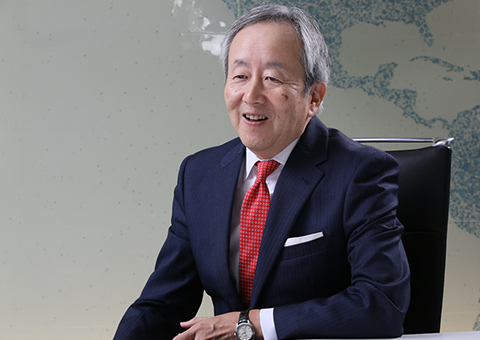
Shinji Miyaji, Representative Director and Senior Executive Vice President
To create an organization that places people at its core, it is important to hire good people. But their subsequent development also matters. Identifying the potential of each individual and considering what kind of career they can build is the basis of human resource development. No department in a company wants to let go of good people. However, if people stay in the same department for too long, then, they will not grow. Therefore, we deliberately plan transfers so that employees can gain various kinds of experiences.
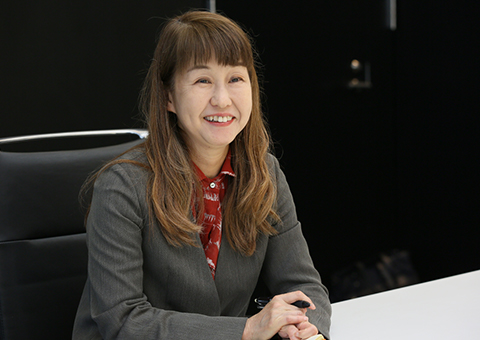
Nagako Kobayashi, Nikkei BP Intelligence Group Chief Researcher and Publisher of Human Capital Online
Kobayashi I imagine that a company like AGC, which is rapidly globalizing, will also make use of international human resources. What are your thoughts on the human resources needed in Japan and overseas, and on the active participation of women?
Miyaji Diversity is important to our company. There are two main challenges. The first is to increase the number of women and have them play an active role, which is one of the issues particular to Japanese companies. Until now, we have mainly hired chemistry-related technical employees. But to begin with, the ratio of women in chemistry majors is only 15%. Although other positions have achieved a 30% female employment rate, technical positions make up the majority, limiting the female employee ratio to around 20% based on current employment practice. In the future, we would like to increase the percentage of women to over 30% through measures such as hiring technical employees from fields other than chemistry. Doing so requires us to transform into a company that women would want to join.
The second challenge concerns creating diverse international mix. Our company has approximately 57,000 employees, of which some 13,000 are Japanese. Nearly 80% of our employees are foreign nationals. How do we get these people involved in management? We currently have three non-Japanese executive officers, all of whom are European. This was the natural consequence of acquiring a European company and scaling up operations. However, there are now more than 20,000 employees from Asia. Although many local executives are already involved in the management of each country, I would like to see more skilled personnel from among these employees participate in the overall management of AGC.
Diversity is important because this will determine our future in 10–30 years. Japan’s working population is expected to decrease by 600,000 each year, and to fall below 50 million by 2050. It is already becoming difficult to run a business with only Japanese men. If we fail to act now, then, this will have a serious impact on future generations.
Kobayashi The company is expanding its business from glass to various material sectors, while increasing the number of overseas corporations. Do you have any rules or ideas for strategically allocating management resources?
Miyaji As management resources are limited, the key is deciding where to allocate them. How do you build a portfolio by combining businesses that generate stable earnings with high-risk, high-return businesses? Once you have decided where to invest, you need to properly allocate your management resources there. Basically, I think of businesses in three groups: growth businesses that are expected to expand in the future; cash-generating businesses that generate funds; and businesses that require structural reforms for the future. We label growth businesses that are expected to expand significantly in the future as strategic businesses.
For example, life science is a strategic business. However, since it was originally small, it cannot grow on its own. Therefore, we buy time and scale through mergers and acquisitions. Then -- since we will need human resources to manage the entire business -- we transfer human resources with global management experience in the glass business and in corporate departments to the life science business to support rapid growth. Because speed is key, personnel changes are frequent.
Not only are we rapidly expanding our strategic businesses globally, we are also creating management platforms. Global standards for elements such as governance, internal control mechanisms, accounting standards and information technology infrastructure are decided, and applications for each business and country are prioritized based on these.
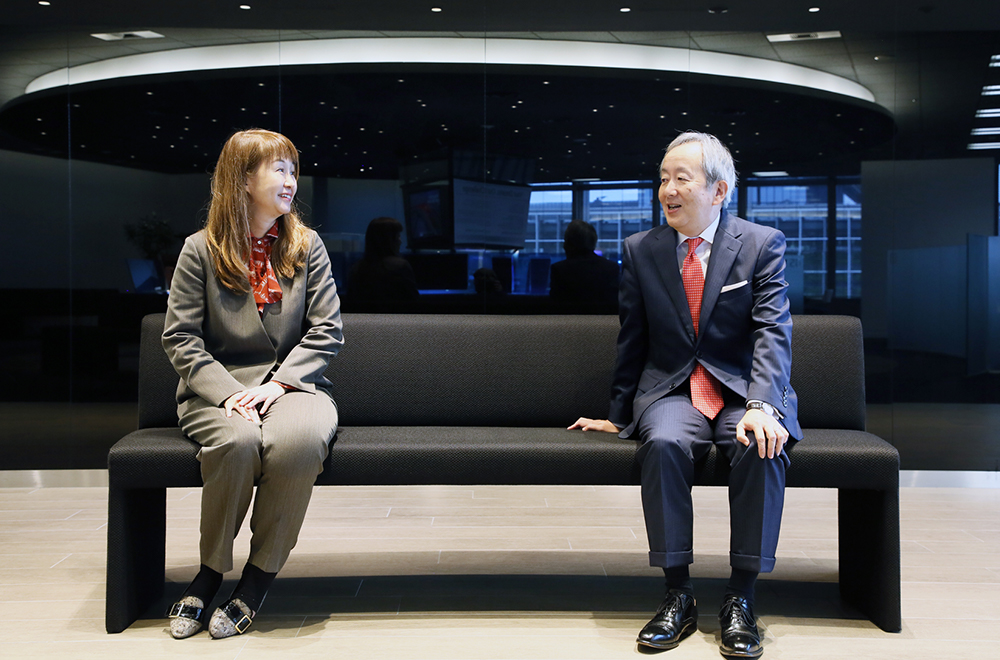
Kobayashi Are only strategic businesses subject to mergers & acquisitions? What criteria are used to select strategic businesses?
Miyaji We deeply value growth businesses. All the companies we have acquired over the last five years are growth businesses. Our chemical business grew rapidly after our 2017 acquisition of Vinythai in Thailand. This is a commodity-based business. Thus, it cannot be called a strategic business. But it is still considered as a growth business.
In terms of strategic businesses, we have invested approximately 200 billion yen in the life science business over the past five years, and approximately half of that has been used for mergers and acquisitions. Additionally, in the semiconductor-related field, we acquired the electronics business of the U.S. company Park Electrochemical.
There are two main criteria when choosing a strategic business. First, it must be asset-light. In such businesses, a small investment can result in a big return. Extending these will contribute to the return on equity of the entire group. Second, it must be resilient to economic fluctuations. The commodity business including glass and some chemical products is easily affected by the economy. However, the life sciences business is not. The electronics field is also expected to grow, regardless of the economy.
Kobayashi There is a strong demand for today’s companies to not only have economic value such as a return on equity, but also for social value such as ESG and carbon neutrality. Particularly in the manufacturing industry, which is Japan’s specialty, many issues need to be addressed.
Miyaji Yes, both economic and social value are important. But current tendencies indicate that social value is of more importance. In the materials industry, reducing greenhouse gas (GHG) emissions is a particularly important issue. The first challenge is to create products without imposing an environmental burden. The second challenge is that the products we create must contribute to the environment.
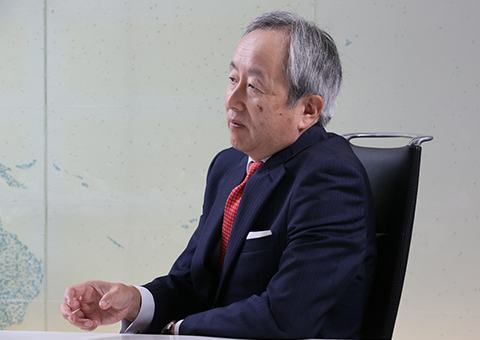
In 2014, we set a sixfold contribution target for 2020 stating that despite our company emitting GHGs in the manufacturing process, the products we produce will reduce the same amount by six times, and we have more or less achieved this goal. However, demands have become even more exacting, with demands for a reduction in absolute emissions. We aim to reduce our emissions 30% by 2030 and achieve net zero carbon emissions by 2050. Some overseas companies are trying to achieve contrived goals by disposing of GHG emitting businesses or moving manufacturing bases to countries or regions with lower environmental standards. However, if Japanese companies do this, they have no future. That is my belief. If we do not directly pursue environmentally friendly manufacturing head-on, Japan will not be able to maintain its status as a manufacturing nation.
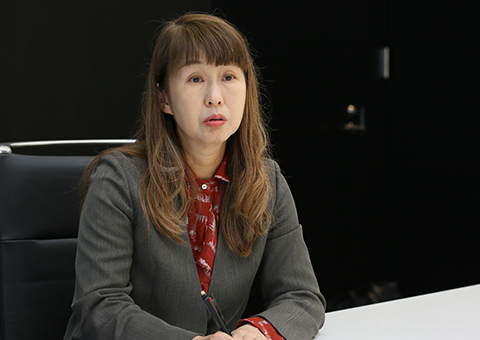
Kobayashi There is also increased interest in digital transformation (DX). What are your thoughts on DX in the materials industry?
Miyaji When it comes to DX, some people only discuss big topics like reforming the business models. However, as regards the materials industry, it is unlikely that DX will fundamentally transform the business model. “Digital” is ultimately just a tool. For our company, DX is just innovation using digital.
What is needed now is the digital streamlining of processes. First, we need to improve productivity through digital methods. Furthermore, we need to extend it both to our company and the entire supply chain. By connecting our company, customers and suppliers through digital means, we can solve customer issues and dramatically improve supply chain efficiency. Digital technologies will greatly contribute to transforming Japan’s supply chain.
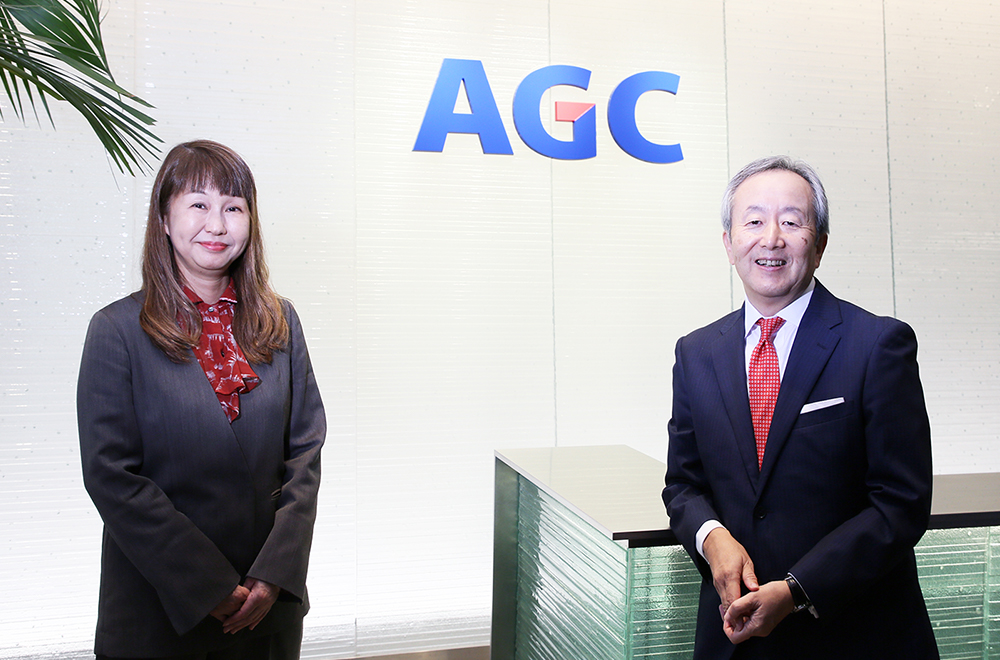
Reprinted from Nikkei Business Online Edition Special
*Department names and titles are those at the time of the interview.







